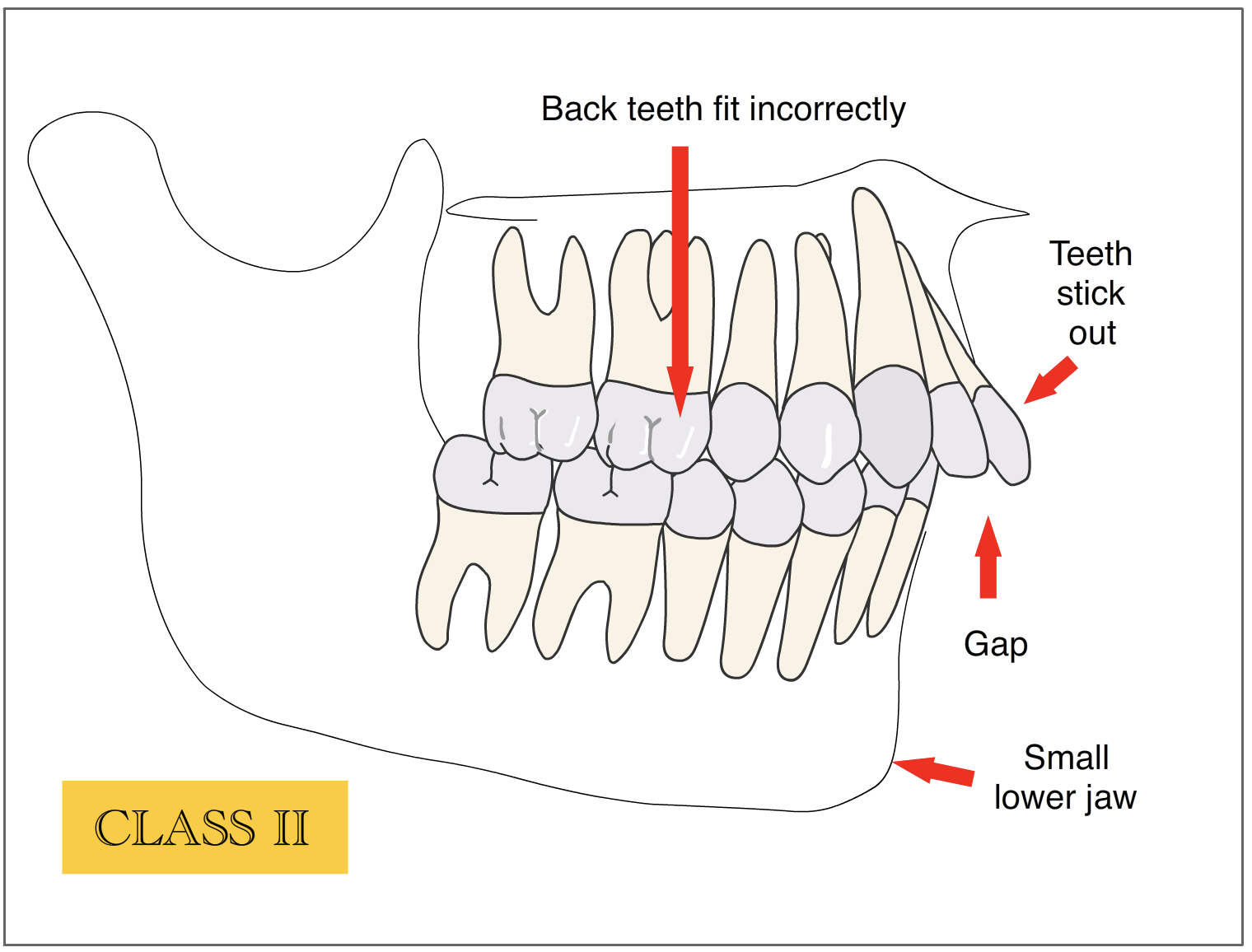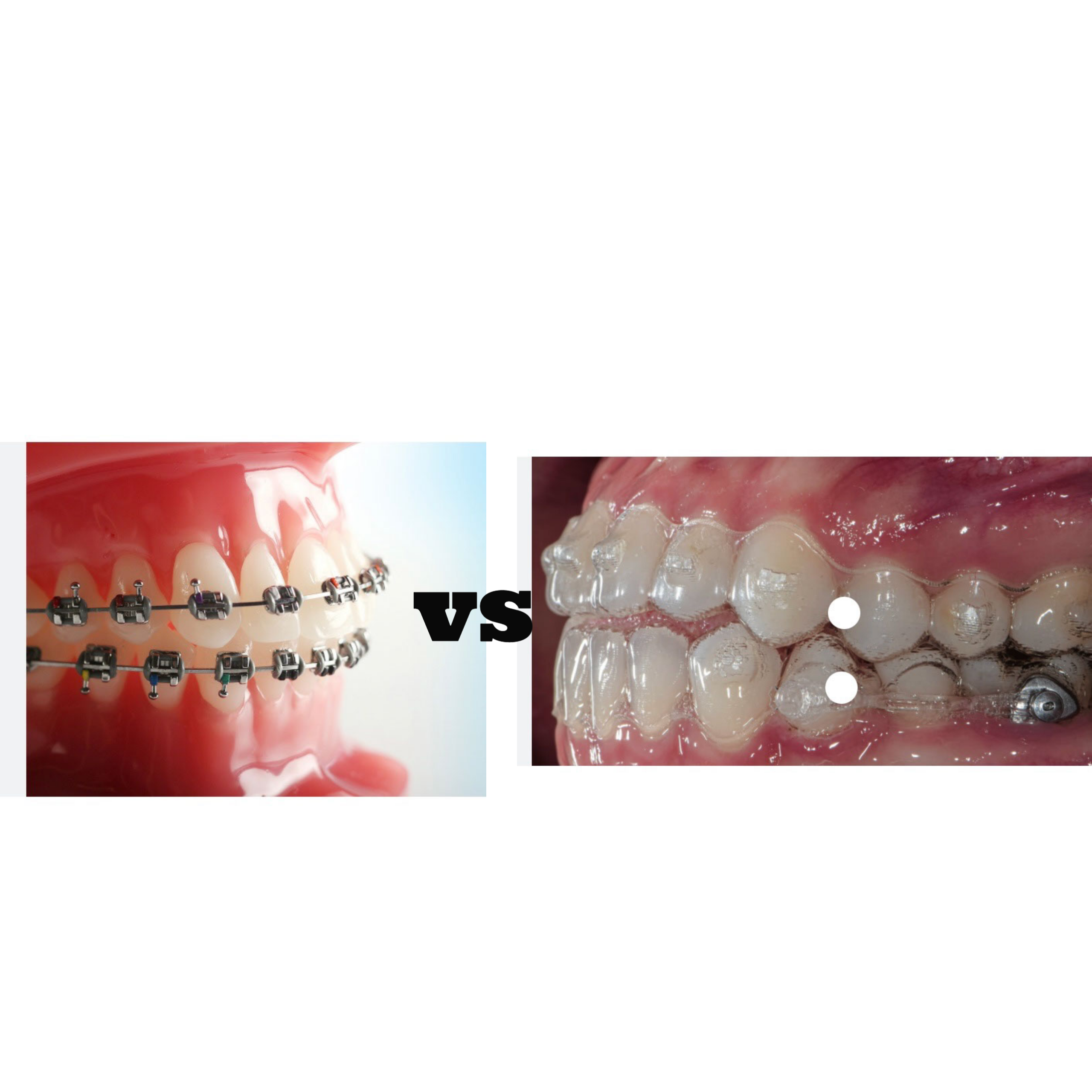•Class 2 malocclusion is a type of dental misalignment where the upper teeth and jaw protrude forward in relation to the lower teeth and jaw. This type of malocclusion is also known as retrognathism, overbite, or overjet. •Class 2 malocclusion can be further classified into two subtypes: •Division 1: In this subtype, the upper front teeth are significantly protruded forward and often stick out over the lower front teeth, creating a severe overbite. •Division 2: In this subtype, the upper front teeth are tipped backward, and the upper jaw is still protruded, but not as severely as in Division 1. There may also be a deep bite, where the upper front teeth cover a significant portion of the lower front teeth. •Class 2 malocclusion can cause various issues, such as difficulty in biting and chewing, speech problems, increased risk of dental trauma, and aesthetic concerns. Orthodontic treatment, such as braces or clear aligners, can help correct Class 2 malocclusion and improve dental function and appearance. In some cases, additional treatments, such as jaw surgery, may be necessary to correct severe cases of Class 2 malocclusion. It’s important to consult with a dental professional if you suspect you have a malocclusion or other dental issue. •
What are the differences between a treatment with clear aligners vs conventional braces ?
•Orthodontics with brackets and aligners are both orthodontic treatment options that aim to straighten teeth and improve their alignment. However, there are some important differences between the two options. •Braces, which are also known as brackets, are a traditional orthodontic treatment that involve attaching metal or ceramic brackets to the teeth, which are then connected by a wire. The wire is tightened over time, which applies gentle pressure to the teeth, gradually moving them into the desired position. Braces are a fixed appliance, which means they cannot be removed by the patient. •On the other hand, aligners are a newer orthodontic treatment that involves wearing a series of clear, removable plastic trays that are custom-made to fit over the teeth. Each tray is worn for a period of time before being replaced by the next tray in the series, gradually moving the teeth into the desired position. Aligners are a removable appliance, which means that they can be taken out for eating, brushing and flossing. •Some of the key differences between brackets and aligners include: •Appearance: Braces are made of metal or ceramic brackets and wires, which are visible on the teeth. Aligners are made of clear plastic, which makes them much less noticeable. •Comfort: Braces can cause discomfort or soreness, particularly in the first few days or after adjustments. Aligners are generally more comfortable, although some people may experience some initial discomfort or pressure when they start wearing a new tray. •Maintenance: Braces require extra care to keep them clean, as food particles can get trapped in the brackets and wires. Aligners need to be removed for eating and drinking, and they need to be cleaned daily to avoid staining and odor. •Treatment Time: Braces typically take longer to straighten teeth than aligners. However, the length of treatment time can vary depending on the individual case. •Cost: The cost of braces and aligners can vary depending on the specific treatment plan and the provider. Overall, both braces and aligners can be effective in treating orthodontic issues, and the choice between the two options will depend on the individual’s specific needs and preferences. Your orthodontist can help you to determine which option is best for you.
Quels sont les bénéfices d’un traitement orthodontique?
•Le traitement d’orthodontie peut offrir de nombreux avantages, notamment : ·Un meilleur alignement dentaire pour une apparence plus esthétique ·Une amélioration de la fonction dentaire, y compris la mastication et la parole ·Une réduction du risque de caries dentaires et de maladies des gencives ·Une réduction du risque de traumatisme dentaire ·Un alignement correct des mâchoires pour réduire les problèmes de l’articulation temporo-mandibulaire ·Une amélioration de la confiance en soi grâce à une meilleure apparence dentaire. ·Il est important de consulter un professionnel de la santé dentaire pour déterminer si un traitement d’orthodontie est approprié pour vos besoins dentaires individuels. •




